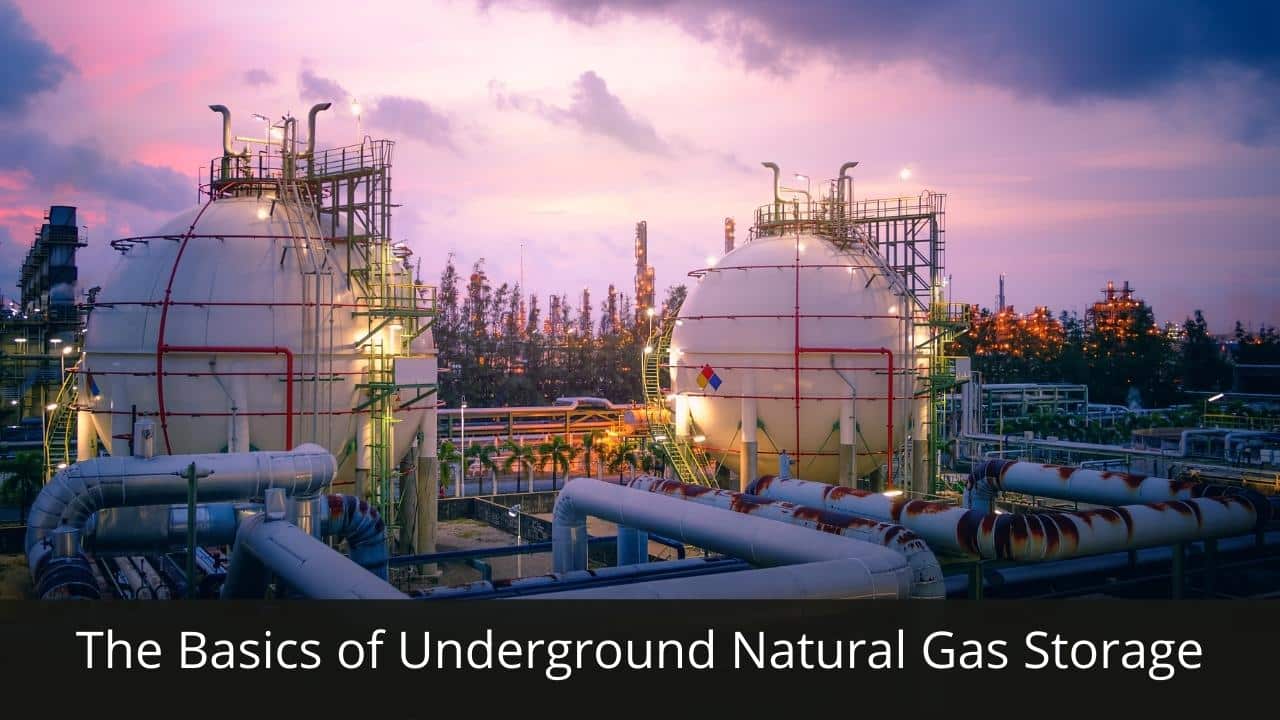What is underground natural gas storage?
Underground natural gas storage is a way to store and regulate gas supplies. It can be done by extracting, compressing, storing, and injecting the natural gas underground.
The compressed natural gas (CNG) underground storage consists of a porous formation that is hydraulically fractured to create natural gas-bearing fractures.
The capacity for underground CNG storage can depend on the formation type, the depth, and the fracture geometry.
The storage capacity of CNG in a formation depends on the porosity and permeability of the formation. The more porous or permeable it is, the greater the storage capacity.
The CNG is stored in a porous formation, such as sandstone or limestone, which has been hydraulically fractured to create natural gas-bearing fractures.
How does underground natural gas storage work?
A common misconception of natural gas is that it’s a “clean” fuel, and therefore safe. This is not the case. Methane, the main component in natural gas, has been found to leak billions of cubic feet into the air annually. Underground natural storage is where methane and other gases are stored in underground cavities or depleted oil fields, which can be “flared” or burned off.
Researchers have found that methane and other gases are leaking into the air at a rate of 3% to 12%. This is far higher than previously thought and could be contributing to global warming.
The state of California has already passed legislation that requires oil and gas companies to reduce the amount of methane leaking into the atmosphere by 40% from 2013 levels by 2030.
What are the benefits of underground natural gas storage?
Underground storage of natural gas is a popular method for saving the commodity. There are many benefits associated with underground storage, including:
-Improving security by providing an alternative to pipelines and other forms of transportation;
-Creating more flexibility in the pricing and availability of natural gas, which is important during peak demand periods (i.e., winter);
-Facilitating an increased use of renewable energy sources, such as wind and solar;
-Increasing the efficiency of natural gas distribution systems by reducing the amount of natural gas that is lost through leaks.
In addition to these benefits, there are also a number of risks associated with underground gas storage. These include:
-Potential environmental impacts from pollutants that may leak into the groundwater;
-The possibility of an explosion or fire occurring in a storage facility;
-The possibility of an earthquake causing damage to the underground structure that houses the gas.
In order to minimize these risks, regulatory bodies such as the U.S. Department of Transportation (DOT) and the U.S. Environmental Protection Agency (EPA) have established strict guidelines that govern how underground gas storage facilities are built, operated, and maintained.
What are the different types of underground natural gas storage facilities?
There are five types of underground natural gasses storage facilities: depleted reservoirs, aquifers, salt caverns, unmendable coal seams, and man-made cavities.
Depleted reservoirs may be depleted oil or natural gas fields, abandoned mine pits or quarries. Aquifers are water-bearing layers of rock beneath the surface and salt caverns can be mined from either solid salt domes or salt beds. Unmendable coal seams are created by mining companies that leave behind large empty spaces in the rock. Man-made cavities can be mined from solid limestone, dolomite, or salt.
Salt caverns are mined from solid salt domes and not beds. I think the passage should be edited to correct this.
What are the safety concerns with underground natural gas storage?
There are many safety concerns with underground natural gas storage. One major concern is the potential for a leak to occur and cause an explosion. Leaks can happen if construction crews accidentally hit old pipelines, if a pipeline is damaged during an earthquake, or simply because the pipelines are old. Another concern with underground gas storage is that it can be difficult to detect leaks until they become severe and many people in the area have already been exposed to the gas.
The Basics of Underground Natural Gas Storage
Underground natural gas storage is used for four main purposes: 1) storing extra natural gas during peak demand periods to be used during peak demand times and when the wind is not blowing, 2) storing natural gas that has been removed from production fields until it can be sold at a higher price, 3) storing natural gas that has been removed from storage fields because it is no longer economical to produce, and 4) storing natural gas during the winter months when there is less demand for heating.
Natural gas is stored in underground salt caverns, depleted oil and gas fields, or aquifers. The storage of natural gas within the earth’s crust has been occurring for millions of years.




